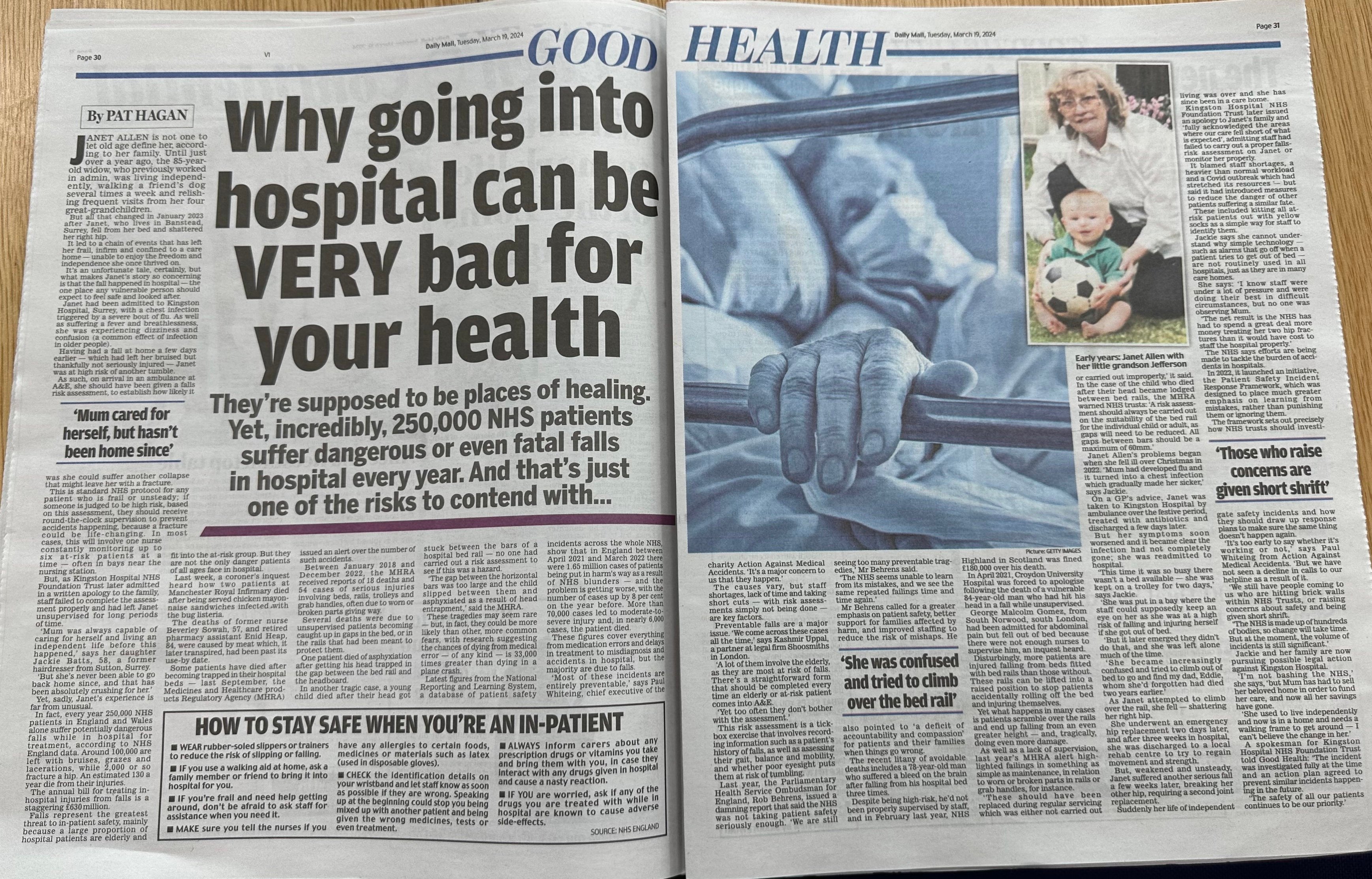The daily Mail has recently reported that 250,000 NHS Patients a year suffer a dangerous or even fatal fall estimated to cost £2.3 Billion pounds a year. The sad reality is that a great deal of falls are preventable and some would argue that all of them are, but let's be realistic.
It is commonly overlooked that many falls frequently occur as a result of behaviours that challenge. So, what causes behaviours that challenge and what can be done to prevent it? Many fallers in hospital are elderly and have complex conditions such as Dementia and other underlying cognitive issues. Hospitals are incredibly scary and daunting places; they are unfamiliar and full of unfamiliar faces. These patients become very confused, unsettled, bored and restless in hospital and their behaviours deteriorate and escalate as a result. This can lead to wandering with purpose that leads to falls and combative behaviour leading to other safeguarding incidents.
Hospitals in general offer globally admired Clinical and Nursing interventions focussed on physical health; however, the Mental Health and Wellbeing of patients is sadly commonly overlooked and can be viewed as a 'nice to have', due to under resourcing, underfunding and a lack of awareness of the problem.
Scotland are ahead of the game. Last year, I wrote to UK Governments lobbying for more investment, resources and standards focussed on enhanced therapeutic proactive and preventative care to be considered. I was delighted to receive an invitation to meet with Government officials and received a letter from Michael Matheson Cabinet Secretary for NHS Recovery, Health and Social Care. I was really reassured to hear that new reforms are being implemented, including a proactive and preventative care programme.
One extract from the letter was really encouraging:
"Many Health Boards and Health and Social Care Partnerships have commissioned the RITA package, or using similar approaches in hospitals, community hospitals.
Our lead Allied Health Professionals from SG and across the health and care system are very active in this space - dietitians, speech and language therapists, physio, art, drama and music therapists as well as a large contribution by 3rd sector organisations are currently promoting reminiscence therapies and similar approaches across Scotland. Dementia Nurse Consultants, QNIS, psychology, learning disability colleagues are also working around this. In such a busy field the evidence base for all these activities varies enormously as it encompasses everything from aromatherapy to talking therapies, music therapy, library work, sensory work, digital options. In addition, there are many private companies promoting their products within this field."
So how does our RITA technology help to prevent falls and support the proactive and preventative care initiative?
The answer is that it is not the RITA device specifically, that helps to prevent a fall, it is the proactive therapeutic use of the RITA technology with patients/service users that helps to prevent falls.
Why?
When staff use RITA as an alternative therapeutic intervention, they are ultimately proactively enhancing the care environment and Patient's Mental Health, Quality of life and wellbeing. By doing so, this helps to prevent behaviours that challenge (Common root cause) occuring in the first place which in turn contributes to prevention of incidences of falls that may occur otherwise.
It is critical for other NHS leaders to follow Scotland's lead and to see the opportunity here. This is a prime example of an invest to save case.
If falls are costing the NHS an estimated £2.3 Billion pounds a year, surely it is logical to invest in a proactive and preventative care agenda.
Even if this approach were to help prevent just 10% of falls a year, we are talking a cost release saving to the NHS of £230M a year!
Arguably, the biggest challenge of course, is changing mindsets and culture; and this can only be achieved by implementing new standards, procedures and quality monitoring assessments.

